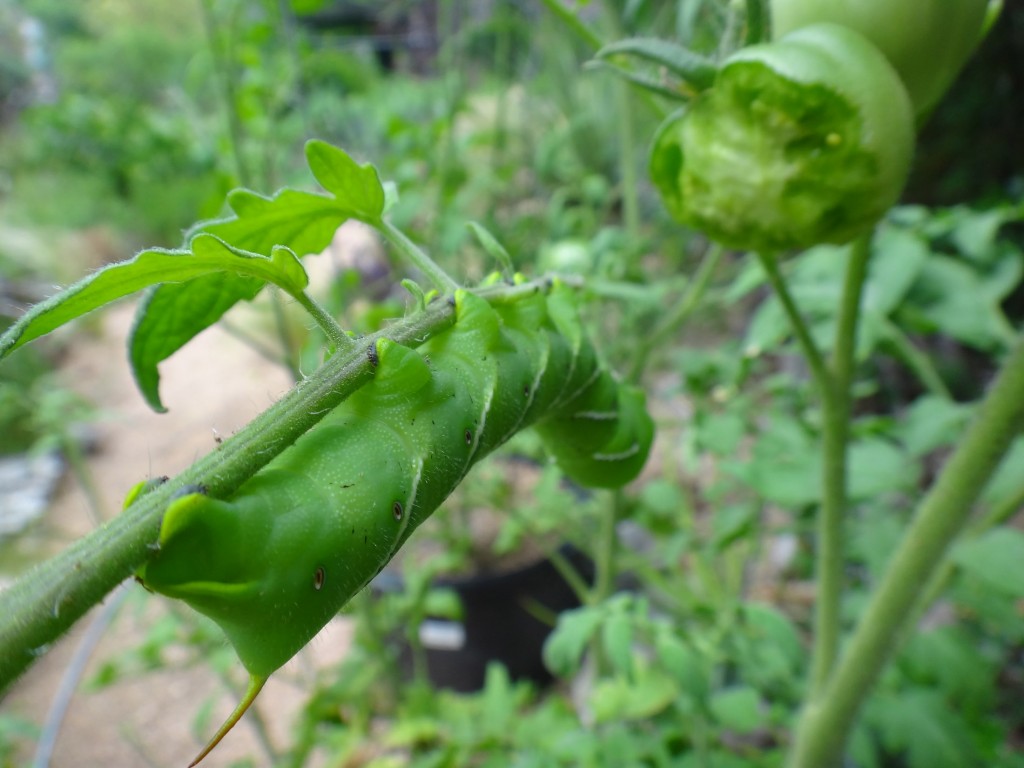
“Just a little bit further!”

“Why you little…”
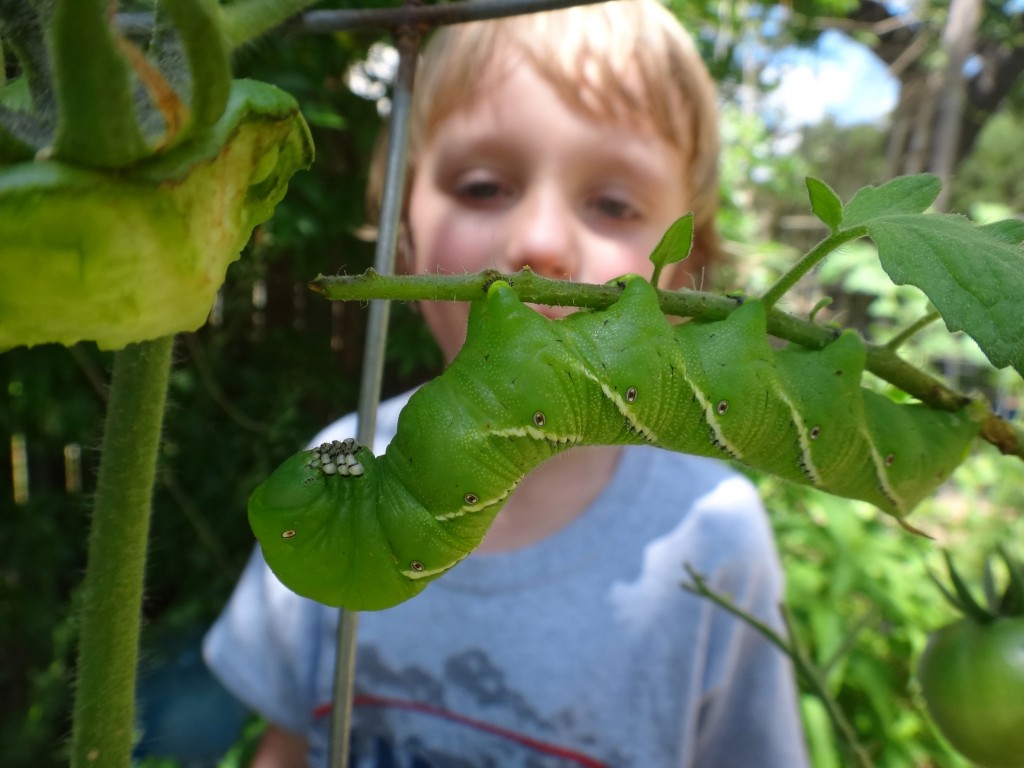
The tobacco hornworms
Maduca sexta
have been bulking up on my tomato plants this past week and have now reached alarming proportions.
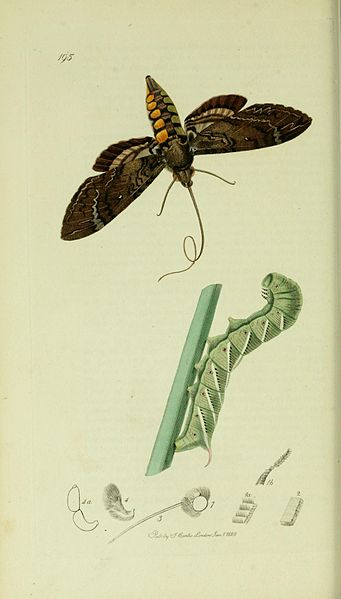
Illustration from John Curtis’s British Entomology Volume 5.
Talking of alarming proportions…
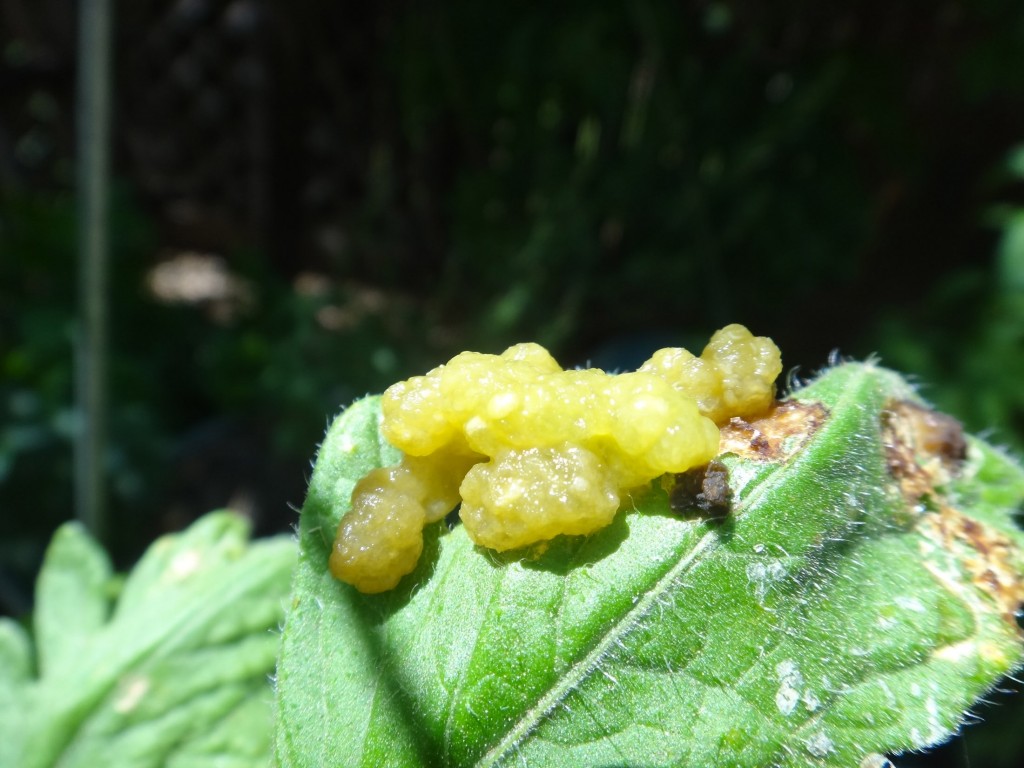
Really?
All this ‘frass’ from one caterpillar?
Yes I said frass.
I think I will affectionately adopt this term into my child-friendly, on-route vernacular, as in; “That frass on the bike just made me miss the green light!”
“What dad?”
“Never mind…
…Frass!”
I apologize if you are eating and reading, you should know better.
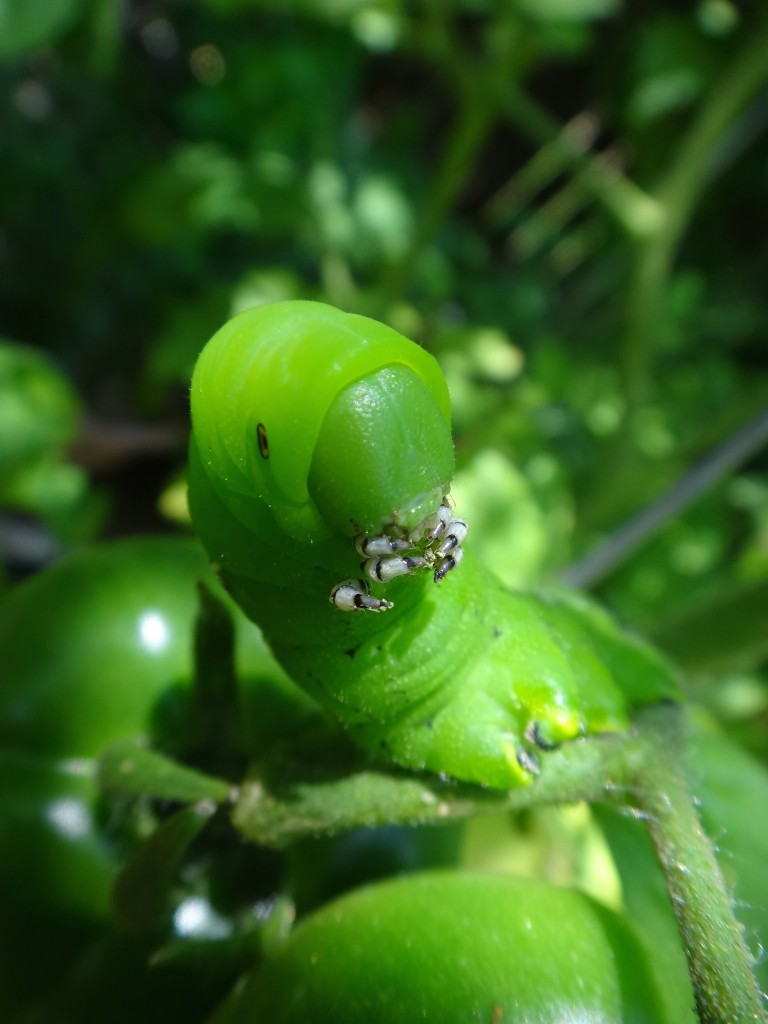
You can just make out the caterpillars tiny real eyes near the top set of legs, hands, manicured fingernails…whatever they are.
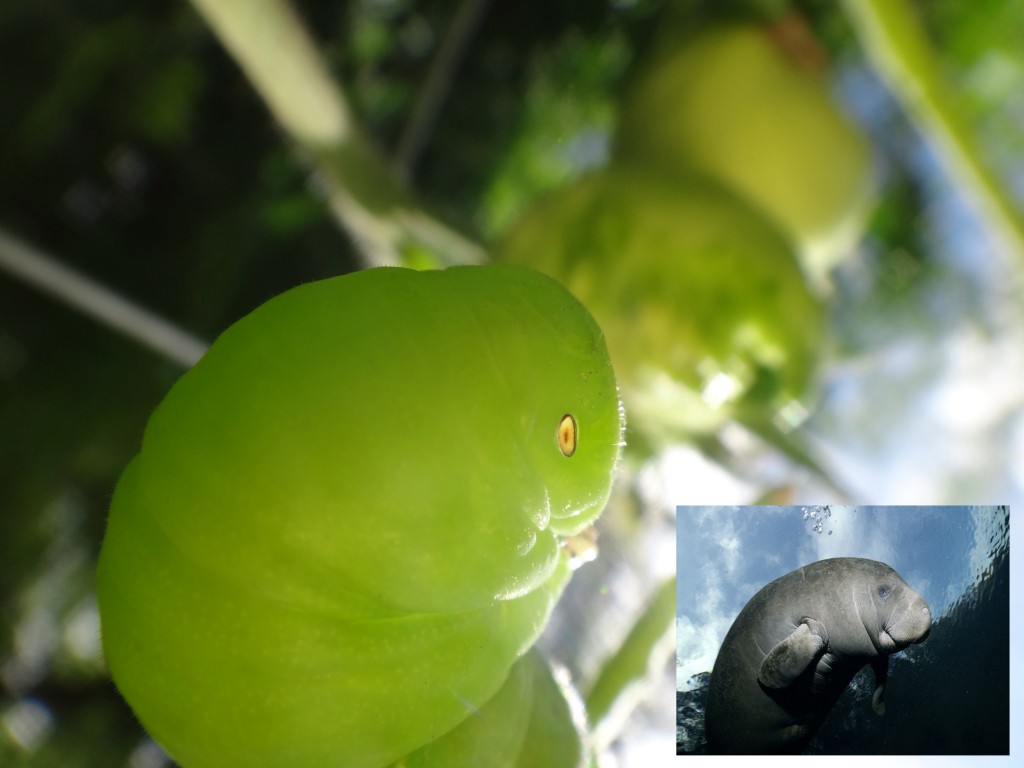
Look at this one eyeing up the already half-eaten tomato with one of its fake eyes,
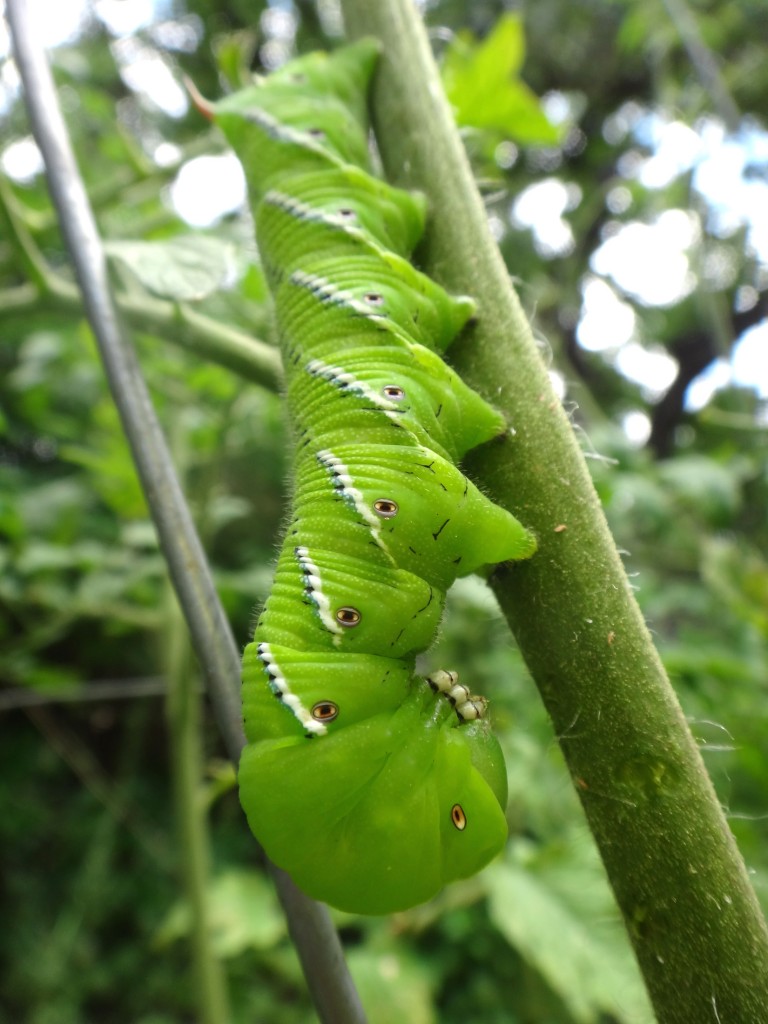
of which there are many. They remind me of lazy-looking anole eyes and the detail and shading around them is remarkable.
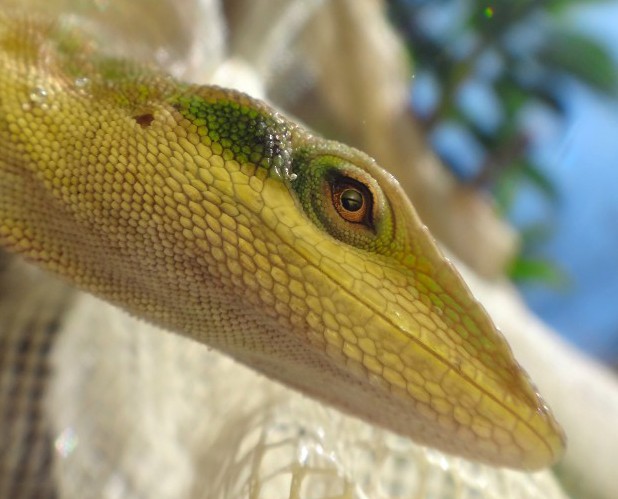
I had four hornworms and they consumed around five green tomatoes and quite a bit of foliage before leaving the plants to pupate, a loss yes, but it was worth it for the daily competition to find them and to observe these bizarre creatures in chomping action.
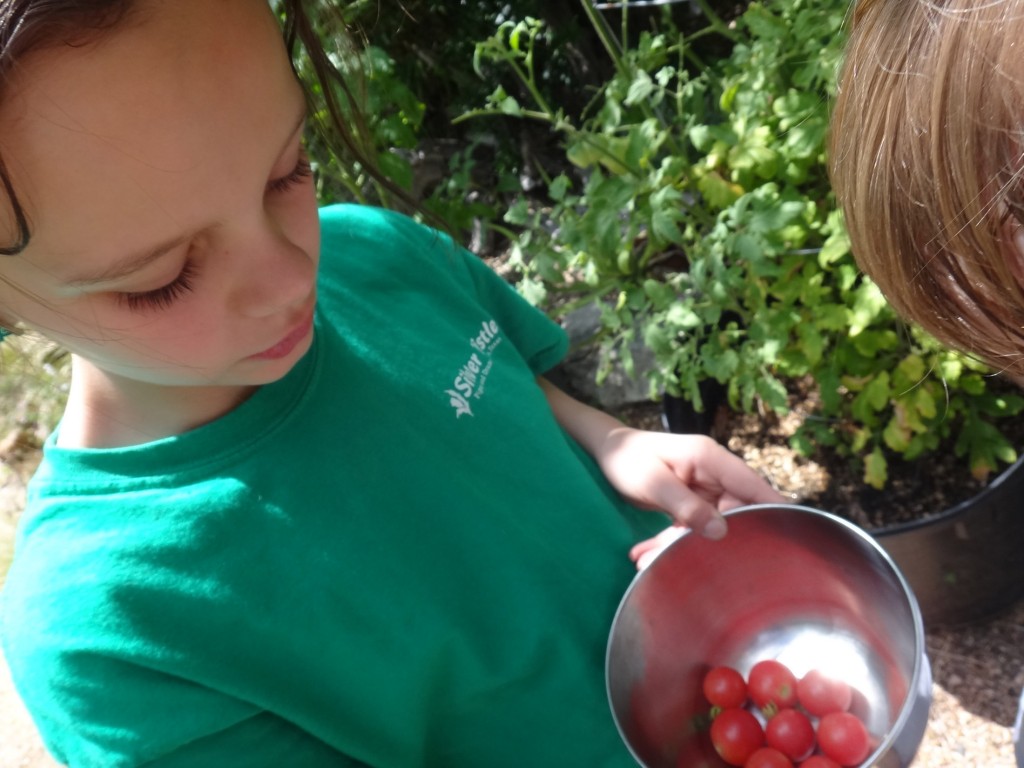
Of course there is one other caterpillar that takes ‘bizarre’ to a whole other level of ‘frassyness’…
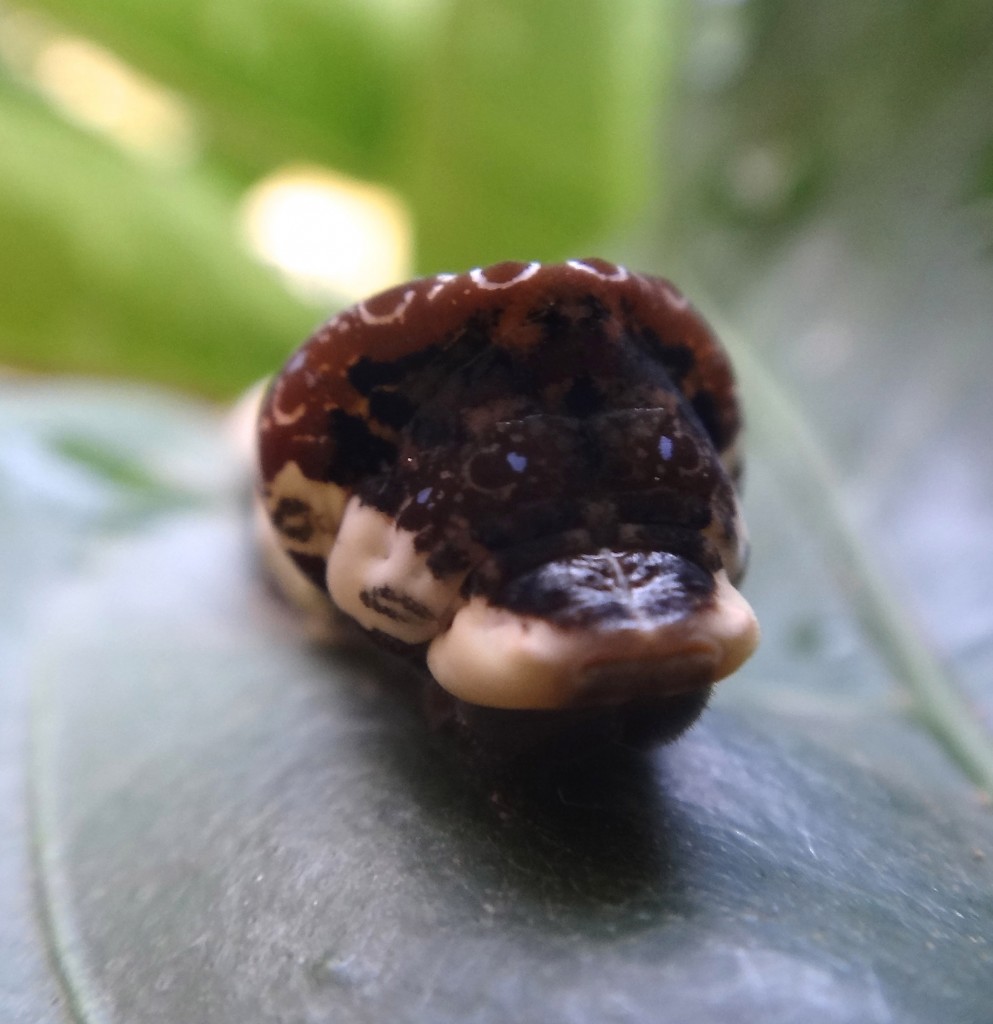 I believe you know of whom I write.
I believe you know of whom I write.
A caterpillar-serpent or worse?
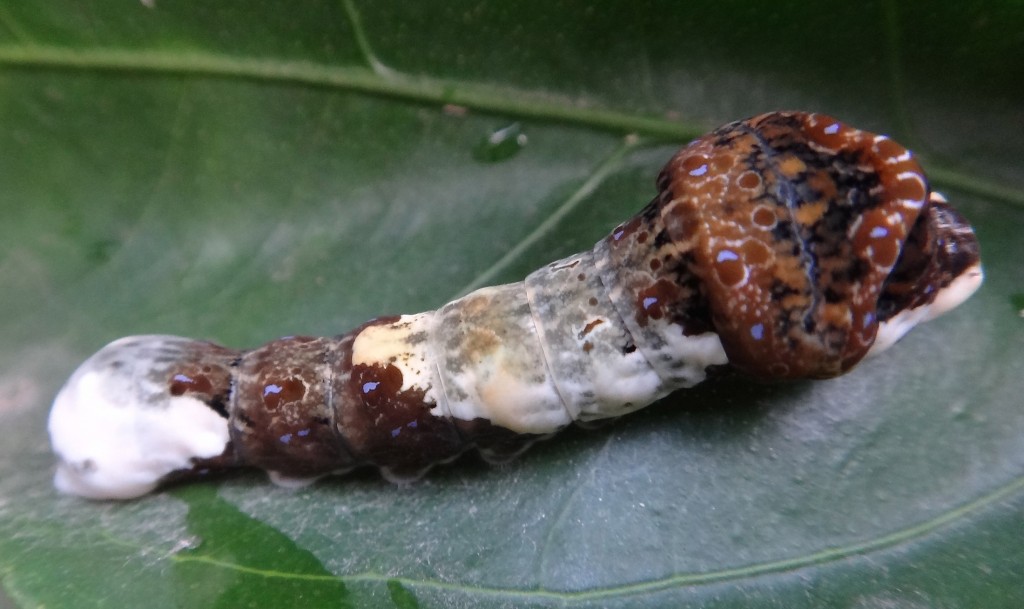
Giant Swallowtail
Papilio cresphontes
The first one of the year, lounging around in the open on one of my satsuma trees.
Well lets face it, it hardly looks an appetizing proposition.

Aw come on Bear.

Moving Along:
My opuntia tree is really turning into a tree.
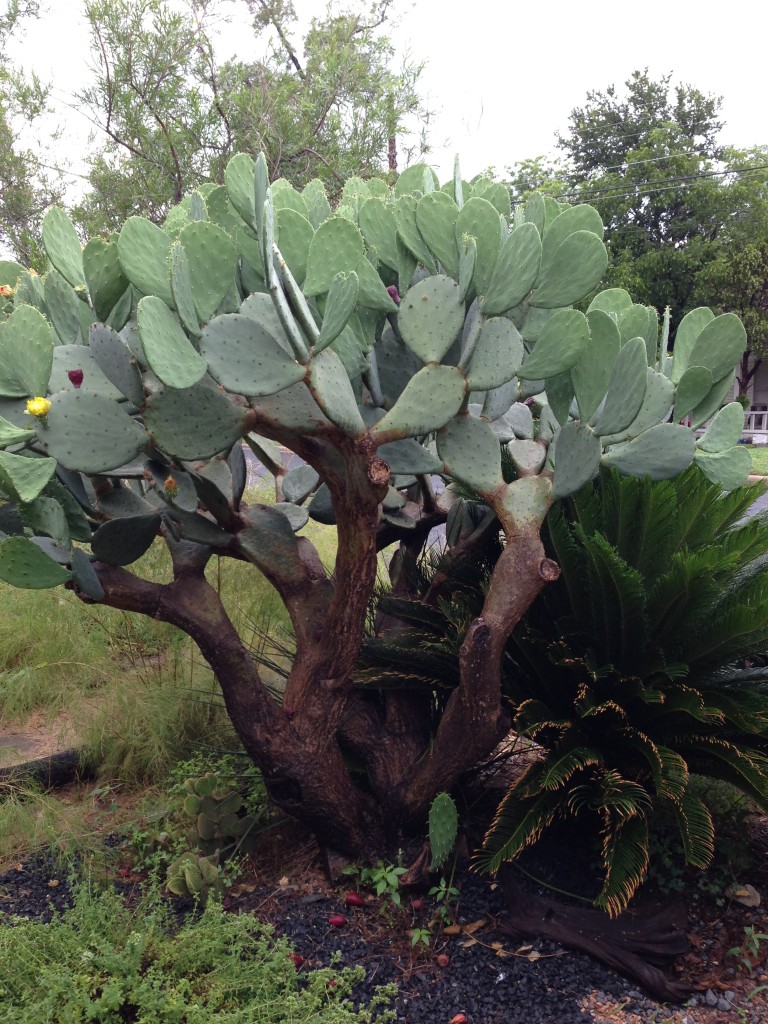
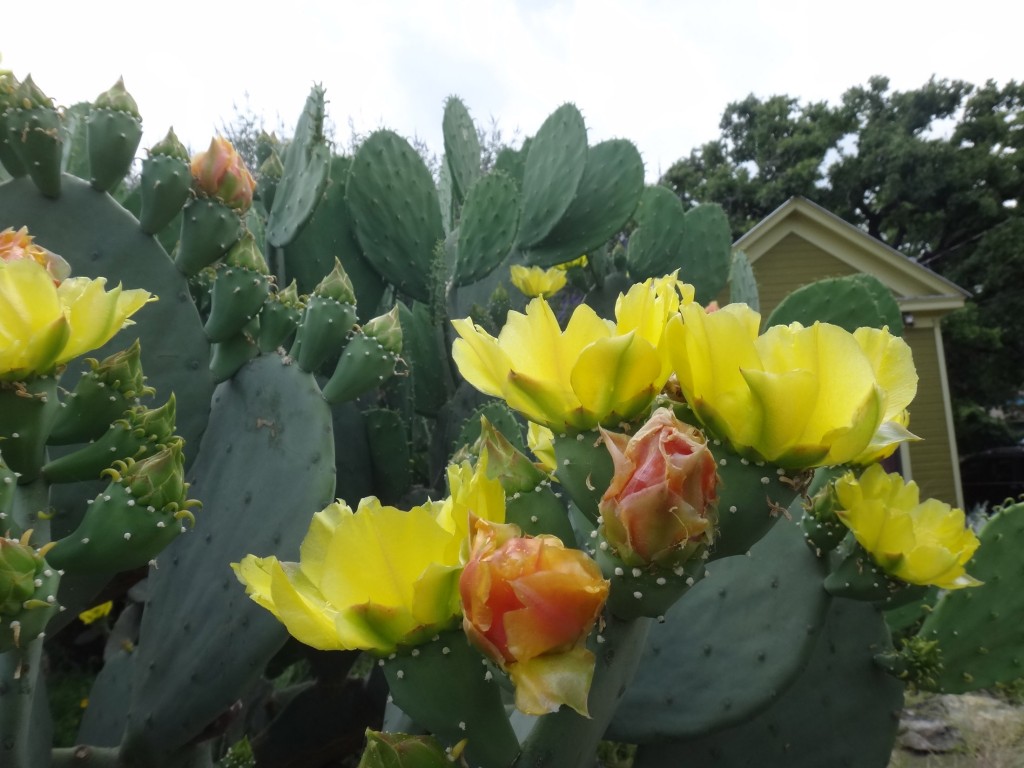
The trunk of this cactus goes from pliable green extremities to wooded and petrified at the base and when it blooms the bees swarm it.
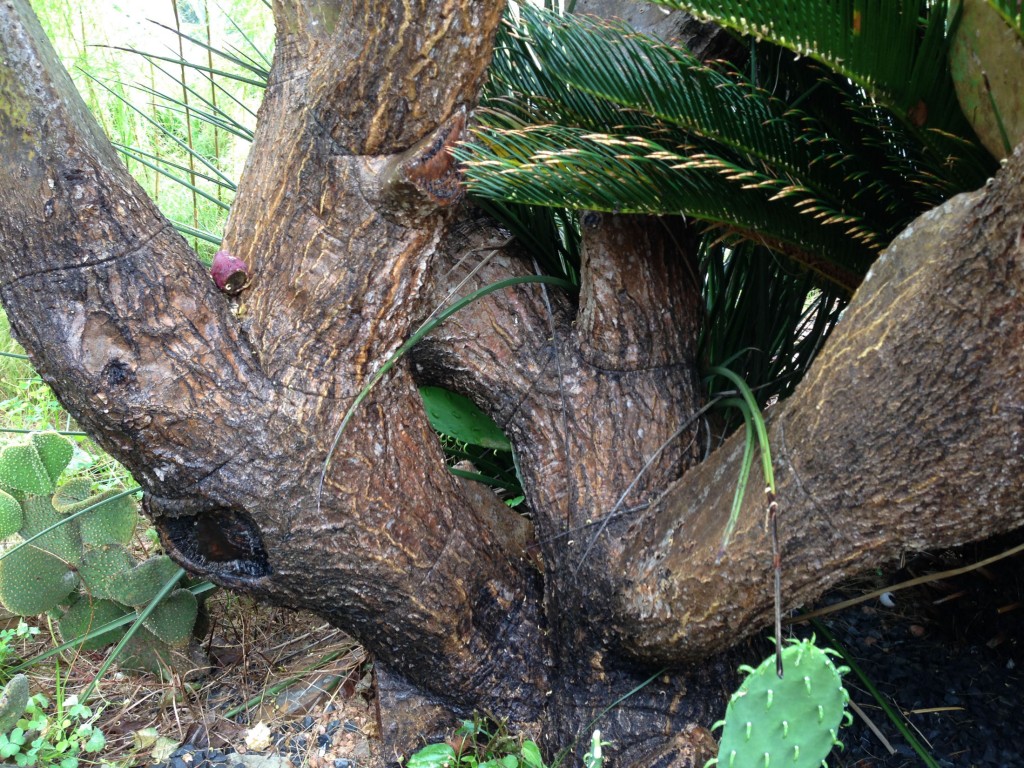
I have started another opuntia tree in my back garden which incorporates cactus man Jr.

More on this in about a decade.
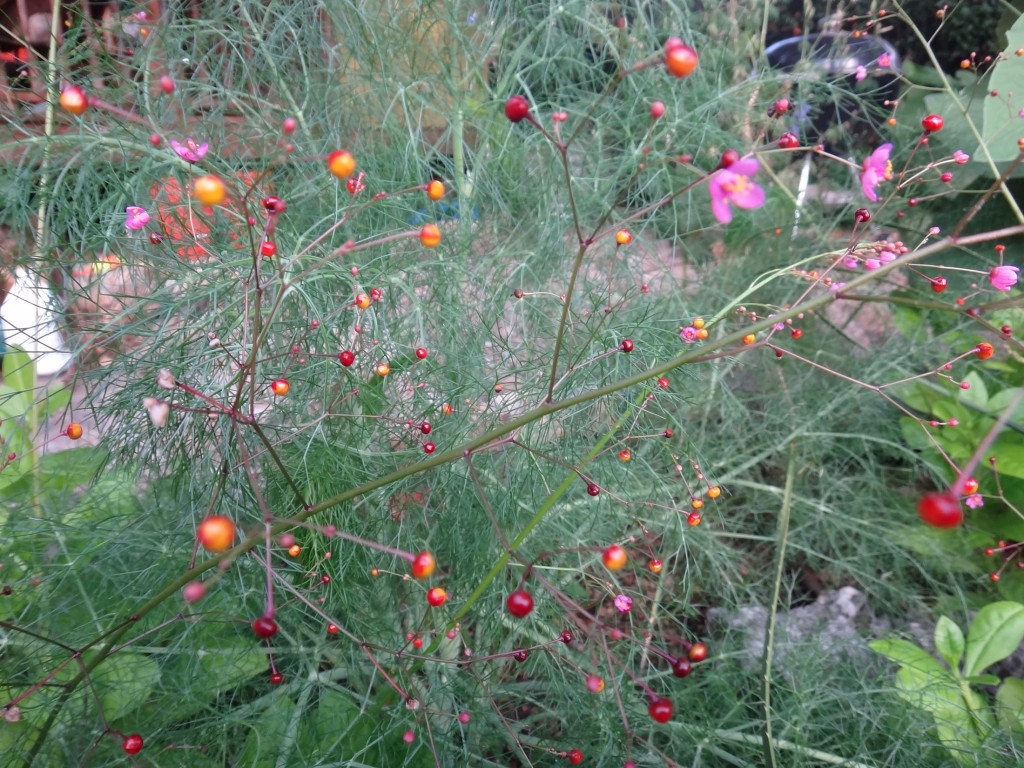
Jewels in the fennel.

A sago congregation.
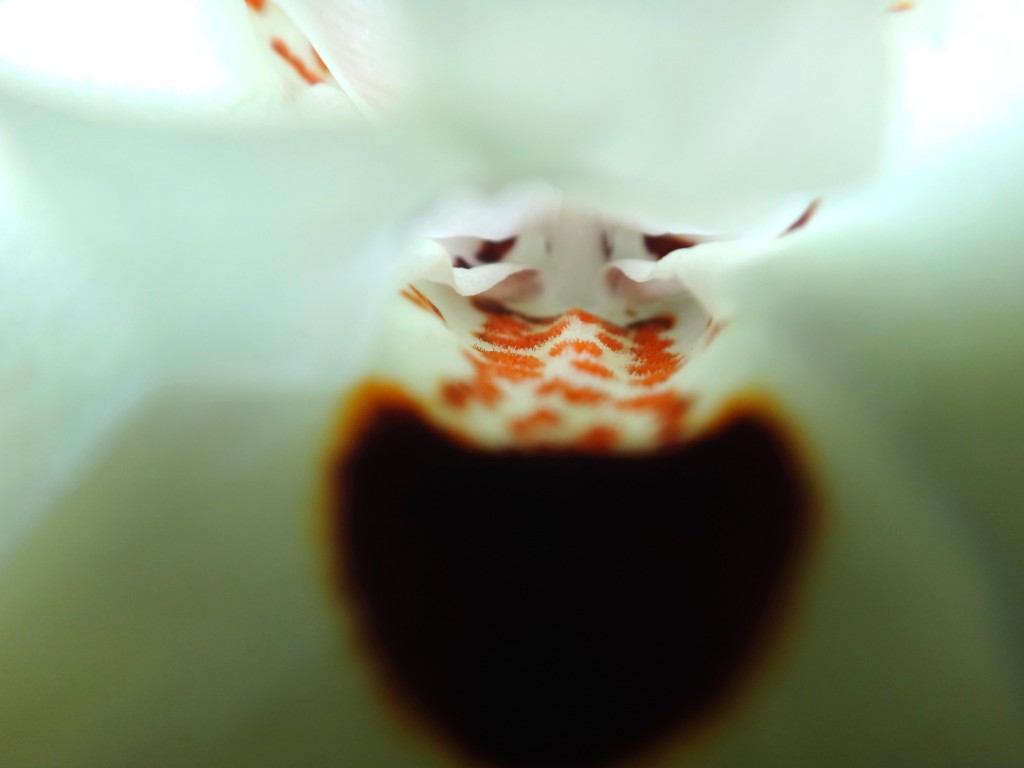
The pained expression of an iris.
Finally:
Excitement rose to fever pitch this weekend when we checked on our geocache canister.
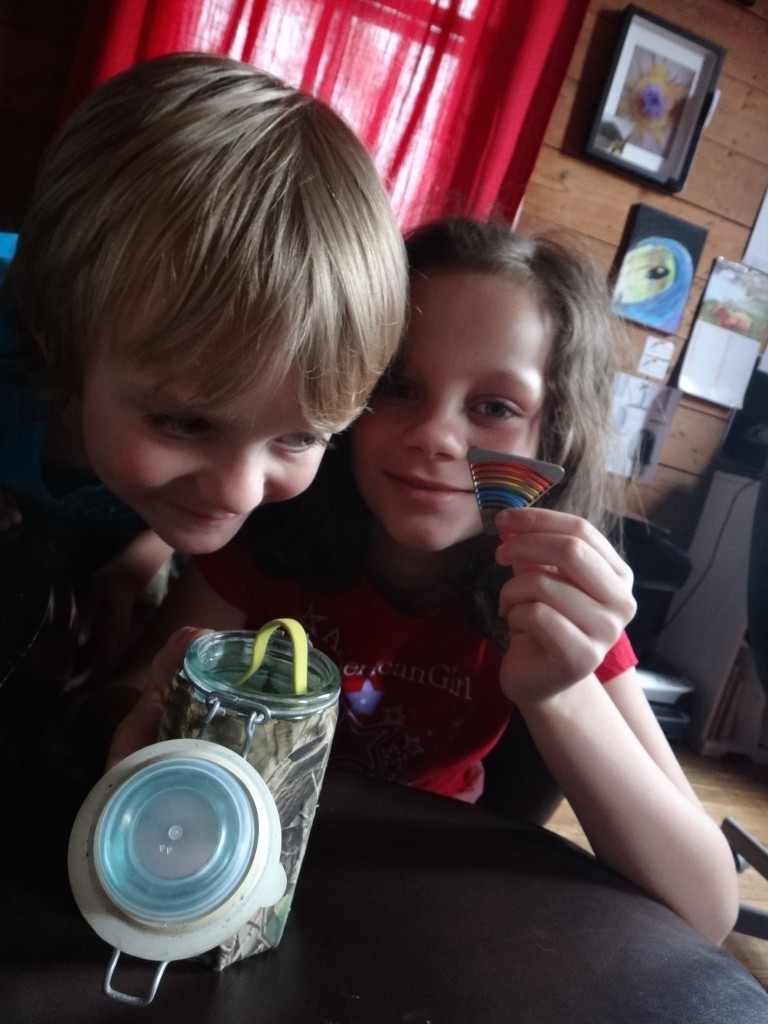
Someone had left a trackable artifact in our container,
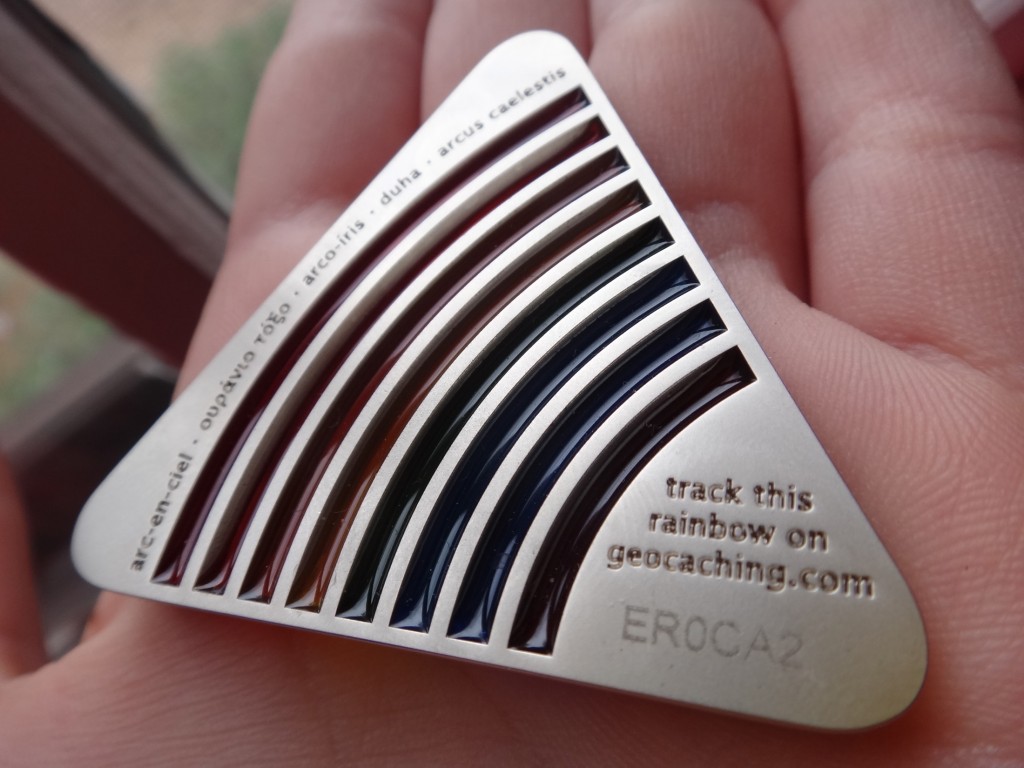
and it was a beauty.
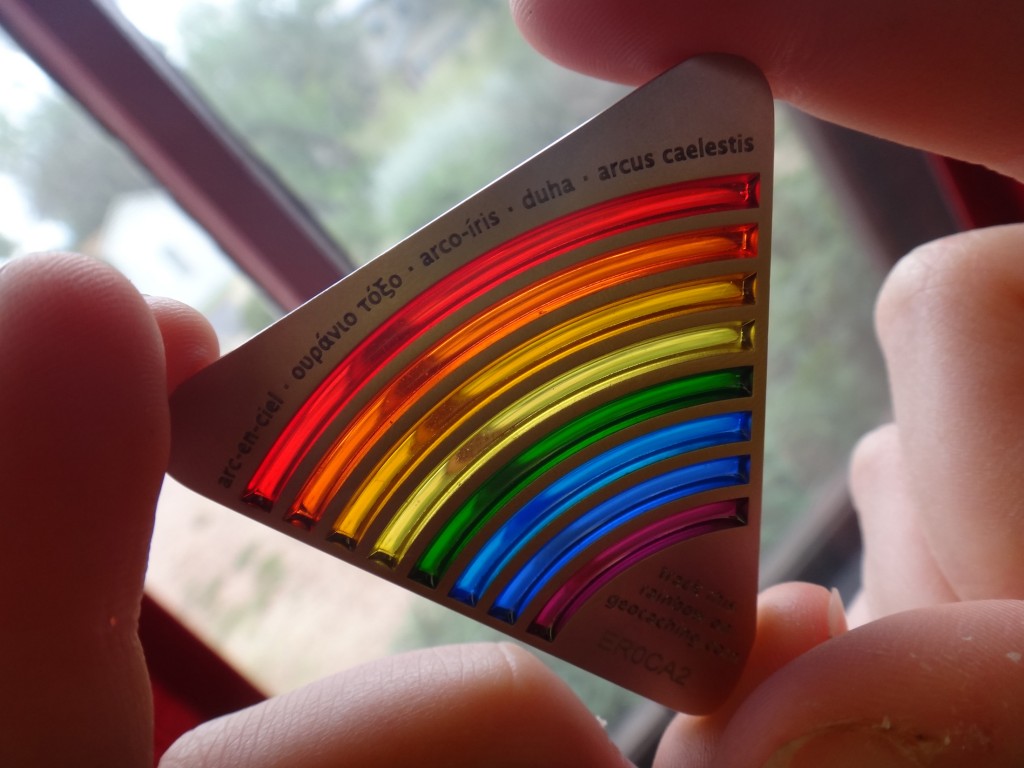
Stay Tuned For:
“The Normandy Phase”
All material © 2014 for eastsidepatch. Unauthorized
intergalactic reproduction strictly prohibited, and
punishable by late (and extremely unpleasant)
14th century planet Earth techniques
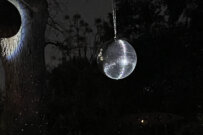
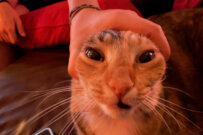




























































Comments on this entry are closed.
Great wormish photos.. all those eyes freak out my hens. Normally they love worms, black widow spiders, other creepy-crawlies, but have been known to run from tomato worms. Is that just a regular opuntia that you’ve cut the lower paddles off of? Mine is getting top-heavy and I’ve been meaning to attack it with, um, a machete? Cool geocache find!
The size alone makes the hornworms a challenge. We moved one of them to an adjacent tomato plant – but not without a fight. It gripped on tight to the stem, reared its manatee head and snapped its mandibles at me. Yikes.
It is a regular spineless opuntia (Opuntia ellisiana?) that I have pruned up over the years…best tool to use is a hook saw.
Yes, a very cool ‘trackable’. I started this trackable some time ago:

I set a goal for ‘Hamish” to get to Lockerbie, Scotland…so far he has hopped around the Southwest and is currently residing at an overlook in Minnesota. Go Hamish, go!
A play, in one act:
Leading blurb in my RSS reader: “Best put your food down to read this latest splattering from the Patch.”
ESP: “Challenge extended.”
Me, chomping on a reuben I just made: “Challenge *headtilt* accepted”
ESP: “I apologize if you are eating and reading, you should know better.”
Me: Yeah, probably.
ESP: “Papilio cresphontes”
Me: I hate myself.
-fin-
Bravo! Bravo Kate :-)
This reminds me that I had a picture of some “things” that my niece found in a water trough. She didn’t know what they were. They looked like maggots with a long hair hanging onto one end. I finally found them and read about them. They were drone fly maggots. The info said they normally lay the eggs close to the anus. Once hatched the maggots crawl inside the anus as far as they can while leaving the air tube sticking out. (the hair looking thing) I thought man, that is some kind of gross, Philip will love this. Really, that is what I thought. I realy like this blog.
Jeez Bob!
I love the fact that my readers go from theater metaphors straight to snorkeling maggots crawling around in the anus.., never a dull moment in the Patch :-)
I love it – a play, a cautionary tale, and all that in the comments section alone!
Part of my fascination with (and devotion to) the use of native plants is the host of native feeders they attract. I deeply appreciate that you include them regularly in your postings. And I do so admire your macro shots. How much easier to pop in here and clearly see what’s been munching (and frassing) in the comfort of my screen glow rather than stalking the monster munchers in my own garden spaces.
Sidebar query: Does the opuntia seem to self-regulate in terms of avoiding becoming top-heavy? I typically “prune” mine from the top by popping off new pads while they are small and pliable. I like the tree form but was thinking I’d better avoid creating an under-the-opuntia area that might require wriggling into for weeding.
‘A cautionary tale’ indeed Deb, haha and brrr.
I prune the opuntia occasionally – mostly to promote vertical growth but I also thin out the top paddles if they are growing into each other. It is much easier to weed around it with a trunk – better access and less contact with the paddles.
The kids enjoyed watching the monster munches develop. I was relieved when they finally vacated, very happy that I still have plenty of tomatoes to harvest.
Great photos.
Those worms can clean off a tomato plant in no time.
I’ve never seen one of those giant swallowtail ones. Ugh…I’d like to leave it that way.
Love your opuntia tree.
Thanks Linda and yes they can indeed. I only get the Swallowtails on my satsuma trees, amazing how nature paints.